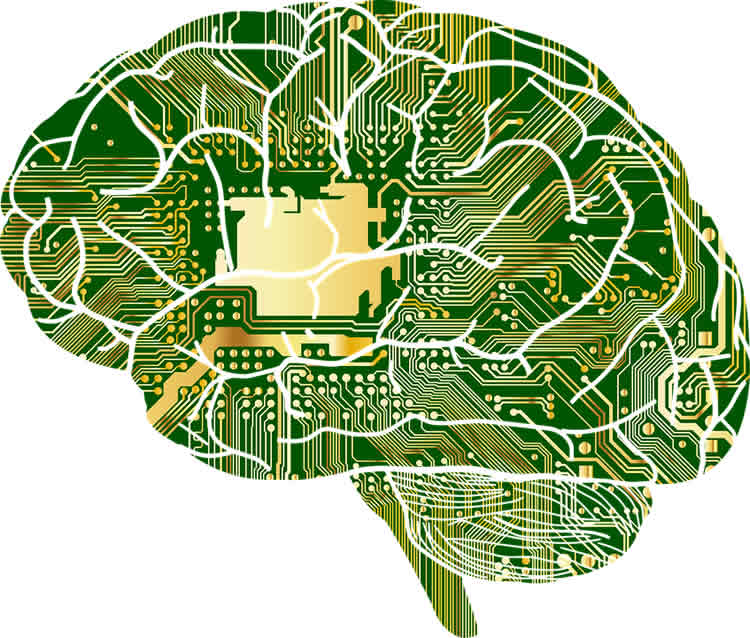Summary: Analyzing a patient’s words, a machine learning system is 93 percent accurate in correctly classifying a suicidal person, researchers report.
Source: Cincinnati Children’s Hospital Medical Center.
Using a person’s spoken or written words, new computer tools can identify with great accuracy whether that person is suicidal, mentally ill but not suicidal, or neither.
A new study shows that computer technology known as machine learning is up to 93 percent accurate in correctly classifying a suicidal person and 85 percent accurate in identifying a person who is suicidal, has a mental illness but is not suicidal, or neither. These results provide strong evidence for using advanced technology as a decision-support tool to help clinicians and caregivers identify and prevent suicidal behavior, says John Pestian, PhD, professor in the divisions of Biomedical Informatics and Psychiatry at Cincinnati Children’s Hospital Medical Center and the study’s lead author.
“These computational approaches provide novel opportunities to apply technological innovations in suicide care and prevention, and it surely is needed,” says Dr. Pestian. “When you look around health care facilities, you see tremendous support from technology, but not so much for those who care for mental illness. Only now are our algorithms capable of supporting those caregivers. This methodology easily can be extended to schools, shelters, youth clubs, juvenile justice centers, and community centers, where earlier identification may help to reduce suicide attempts and deaths.”
The study is published in the journal Suicide and Life-Threatening Behavior, a leading journal for suicide research.
Dr. Pestian and his colleagues enrolled 379 patients in the study between Oct. 2013 and March 2015 from emergency departments and inpatient and outpatient centers at three sites. Those enrolled included patients who were suicidal, were diagnosed as mentally ill and not suicidal, or neither – serving as a control group.

NeuroscienceNews.com image is for illustrative purposes only.
Each patient completed standardized behavioral rating scales and participated in a semi-structured interview answering five open-ended questions to stimulate conversation, such as “Do you have hope?” “Are you angry?” and “Does it hurt emotionally?”
The researchers extracted and analyzed verbal and non-verbal language from the data. They then used machine learning algorithms to classify the patients into one of the three groups. The results showed that machine learning algorithms can tell the differences between the groups with up to 93 percent accuracy. The scientists also noticed that the control patients tended to laugh more during interviews, sigh less, and express less anger, less emotional pain and more hope.
Source: Jim Feuer – Cincinnati Children’s Hospital Medical Center
Image Source: NeuroscienceNews.com image is in the public domain.
Original Research: Abstract for “A Machine Learning Approach to Identifying the Thought Markers of Suicidal Subjects: A Prospective Multicenter Trial” by John P. Pestian, Michael Sorter, Brian Connolly, Kevin Bretonnel Cohen, Cheryl McCullumsmith, Jeffry T. Gee, Louis-Philippe Morency, Stefan Scherer, Lesley Rohlfs and for the STM Research Group in Suicide and Life-Threatening Behavior. Published online November 3 2016 doi:10.1111/sltb.12312
[cbtabs][cbtab title=”MLA”]Cincinnati Children’s Hospital Medical Center. “Machine Learning Automatically Identifies Suicidal Behavior Using Patient’s Own Words.” NeuroscienceNews. NeuroscienceNews, 7 November 2016.
<https://neurosciencenews.com/suicide-machine-learning-5448/>.[/cbtab][cbtab title=”APA”]Cincinnati Children’s Hospital Medical Center. (2016, November 7). Machine Learning Automatically Identifies Suicidal Behavior Using Patient’s Own Words. NeuroscienceNews. Retrieved November 7, 2016 from https://neurosciencenews.com/suicide-machine-learning-5448/[/cbtab][cbtab title=”Chicago”]Cincinnati Children’s Hospital Medical Center. “Machine Learning Automatically Identifies Suicidal Behavior Using Patient’s Own Words.” https://neurosciencenews.com/suicide-machine-learning-5448/ (accessed November 7, 2016).[/cbtab][/cbtabs]
Abstract
A Machine Learning Approach to Identifying the Thought Markers of Suicidal Subjects: A Prospective Multicenter Trial
Death by suicide demonstrates profound personal suffering and societal failure. While basic sciences provide the opportunity to understand biological markers related to suicide, computer science provides opportunities to understand suicide thought markers. In this novel prospective, multimodal, multicenter, mixed demographic study, we used machine learning to measure and fuse two classes of suicidal thought markers: verbal and nonverbal. Machine learning algorithms were used with the subjects’ words and vocal characteristics to classify 379 subjects recruited from two academic medical centers and a rural community hospital into one of three groups: suicidal, mentally ill but not suicidal, or controls. By combining linguistic and acoustic characteristics, subjects could be classified into one of the three groups with up to 85% accuracy. The results provide insight into how advanced technology can be used for suicide assessment and prevention.
“A Machine Learning Approach to Identifying the Thought Markers of Suicidal Subjects: A Prospective Multicenter Trial” by John P. Pestian, Michael Sorter, Brian Connolly, Kevin Bretonnel Cohen, Cheryl McCullumsmith, Jeffry T. Gee, Louis-Philippe Morency, Stefan Scherer, Lesley Rohlfs and for the STM Research Group in Suicide and Life-Threatening Behavior. Published online November 3 2016 doi:10.1111/sltb.12312







